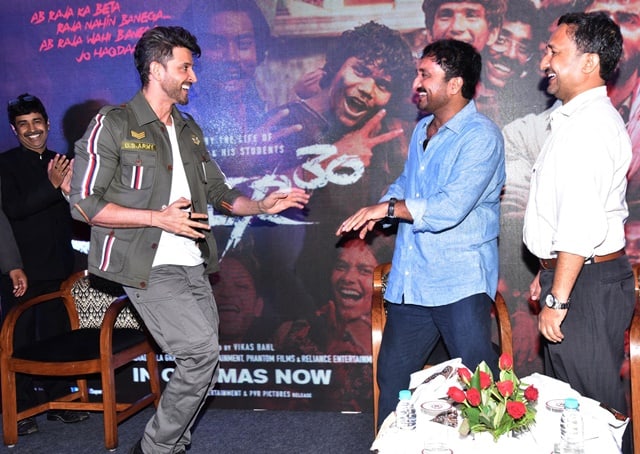
Month: July 2019

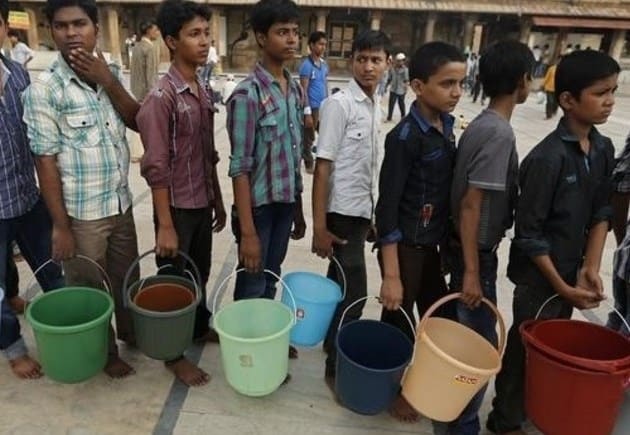
Water – India Has A Hole In The Bucket!
Decades of neglect in rightly managing our fresh water resources, which in any case are quite tight considering its multipurpose uses, including supporting agricultural operation and quenching the thirst of over 1.3 billion, is now spelling untold miseries to millions across the country as it poses a threat to India’s ambitious growth targets.
Drought having gripped 43 per cent of the country and the monsoon deficit still at 17 per cent, thanks to some strong rains in the north but masking the persistent rains shortfall in the south, a large percentage of population is having a nightmarish existence. The government machinery as usual is found wanting in providing relief to people living in parched parts of our earth.
The principal culprit for the current state of affairs is unarguably the indiscriminate way we have been extracting groundwater and in the process earning the dubious distinction of being the world’s most aggressive miner of the precious resource. To put it in perspective, India’s groundwater extraction exceeds the combined tally of the world’s second and third largest users, namely, China and the US.
India is home to 17 per cent of the world population but has to make do with 4 per cent of the earth’s fresh water. China, which houses more than a fifth of the world population, has only 7 per cent of its fresh water. It, however, faces the perennial challenge of meeting minimum water requirements of North China plains where close to 42 per cent of the country’s population lives but holds only 8 per cent of its water resource.
Like China, the US owns 7 per cent of the world fresh water. But it has the advantage of being home to 4.3 per cent of world population. No wonder, the US indulges in the luxury of leaving an average water footprint that is double the global average. No matter that the country owns the world’s largest fresh water lake system in the world in its Great Lakes and the mighty Mississippi river, the importance of conservation and efficiency in use for future security in water supply is not lost on the US Administration. Incidentally, water is one of the seven science missions of the US Geological Survey.
We in India are sourcing over 70 per cent of our water requirements from below the surface drilling aquifers at progressively greater depths without leaving adequate time for natural replenishment. Mihir Shah, a former member of the defunct Planning Commission says: “Over the last four decades, around 84 per cent addition to the irrigated area came from groundwater. Most of this was from deep drilling of tubewells or borewells, which are the single largest source of irrigation as also drinking water, in both rural and urban India.”
Going deeper and deeper the aquifers for water extraction has meant our mining the resource in a growing number of places where the water comes with unacceptable levels of fluoride, arsenic and iron. Use of such water leaves people with serious bone deformities and lung and bladder cancer. Extraction of groundwater at levels where the resource found is polluted and its use results in the government spending millions for treatment of the diseased.
A major failing of our hydrological planning is not conserving enough water for offseason that is beyond the monsoon months. Even after we have built a few thousand large and small dams in different parts of the country, our per capita storage of 215 cubic metre (CM) compares unfavourably with 1,111 CM in China and 1,964 CM in the US. In water conservation, Russia’s per capita tally at 6,103 is way ahead of other countries.
Prime Minister Narendra Modi in his first monthly radio broadcast programme ‘Mann ki Bat’ after winning the elections reminded the water hungry listeners that “only 8 per cent of all rain water in India is conserved… It’s now time to solve the problem” by giving a push to greater grassroots water conservation efforts. What the PM has proposed now should have actually been implemented in past years with great force. Maybe the administration is awakened to the situation now because of the spectre of millions of people in drought affected parts of the country are driven to the edge and food production is to take a hammering. The latter is because more than half of the country’s arable land is rain-fed. India receives around 70 per cent of rains during the southwest monsoon beginning in June and petering out in mid-September.
What India must be geared to is the weakening monsoon in South Asia caused by climate change. Rains in the region were below average for five years in a row, with 2015 being the worst at 86 per cent. Think tank Niti Aayog says in a report that the country faces the harrowing prospect of 40 per cent of its people not having access to drinking water by 2030.
Furthermore, at least 21 cities, including the national capital will run out of groundwater in 2020. Hospitals in southern Indian states finding piped water supply gone dry are getting it for the time being from local politicians owned fleets of water tankers at usurious rates. But this source of water may also run dry and too soon.
In Delhi, less than one fifth of homes have the luxury of piped water supply. In a growing number of places, whatever groundwater is extracted comes with chemicals and other contaminants. It is in the context of tightening water supply is to be seen Modi’s promise of delivering piped water to every home by 2024. As things are now, there is every chance of this post election victory promise remaining unfulfilled as his earlier commitment to create 10 million jobs every year.
Veena Srinivasan of Ashoka Trust for Research in Ecology and Environment will attribute the deteriorating water scene in the country to “multiple causes, both climate and anthropogenic… Of course, the drought itself is caused by a deficit in precipitation and climate change certainly has something to do with the changing precipitation patterns. But… we can’t absolve ourselves from the crisis that we ourselves have precipitated with mismanagement, and specifically by over-extracting groundwater.” She thinks Green Revolution gave licence to millions of farmers to use groundwater without limits to “rise out of poverty.”
The fact is when in the beginning of the sixties India was plunged in a major food crisis, Norman Borlaug and his prescription for breakthrough in rice and wheat productivity not only made the country self-reliant in food but also generated surplus for exports. Remember when Green Revolution was launched, the awareness of water conservation was hardly there in India or for that matter anywhere else. In subsequent times, however, the administration in Punjab and Haryana should have discouraged water guzzling rice cultivation in favour of less water using crops. In any case, the present crisis could have been avoided by the local government disallowing indiscriminate exploitation of underground water.
Farm and allied sector’s contribution to gross domestic product (GDP) has come down over the years to less than 15 per cent while it accounts for over 90 per cent of total water use. Again nearly 90 per cent of extracted groundwater is used in irrigation. But as Niti Aayog CEO Amitabh Kant says water use efficiency in our farm sector is among the lowest in the world. He says: “Our farmers use three to five times more water than Chinese, Israeli and American farmers for producing the same crop.” The remedy prescribes by Kant is to motivate farmers to “adopt cropping patterns based on agro-climatic zoning” to economise on water use. At the same time, radical modification of “subsidies and minimum support price” is needed to “disincentivise farmers from growing water intensive crops.”
Om Prakash Dhanuka, a former president of Indian Sugar Mills Association and a Bihar based producer of sugar, sees no justification of growing highly water-intensive sugarcane in parts of the country, which are highly drought prone and perennially short of water. Because of our surplus sugar production, we are desperate to export large quantities to wriggle out of price falls in the domestic market. But we must remember that when we are exporting sugar or rice, we are also exporting water.
Dhanuka, however, says: “It’s not all despair. For example, at Hiware Bazar village in Maharashtra, the community of farmers is opting out of sugarcane and cotton growing for less water-intensive crops. Farmers are not allowing any more digging of borewells and they are practising water management on scientific lines. We are also seeing similar farmer initiative in Andhra Pradesh and Telengana. Water management will have to be a nationwide movement in which the government, scientists and farmer community must participate wholeheartedly.”
]]>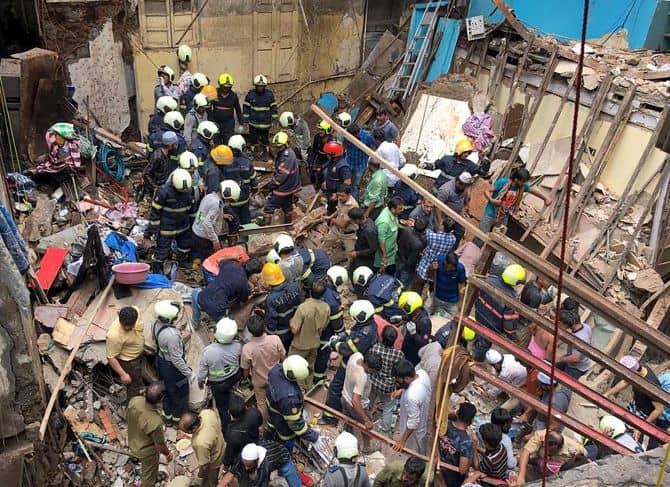
12 Die In Mumbai House Collapse, 40 Trapped
“Two persons have died and five people have been rescued so far in the building collapsed in Dongri,” an official of the Disaster Management Cell, Brihanmumbai Municipal Corporation (BMC) said on Tuesday.
The Chief Public Relations Officer (CPRO), BMC said a shelter has been opened at Imamwada Municipal Secondary Girls’ School after the mishap.
Teams from Fire brigade and National Disaster Relief Force (NDRF) rushed their teams to the site and are carrying out rescue operations.
Five fire brigade vehicles are present at the spot.
The G+4 building ‘Kesarbai’ situated near Tandel street, behind Abdul Hamid Shah Dargah, Dongri collapsed approximately around 11 am today.
Further details are awaited. (ANI)
]]>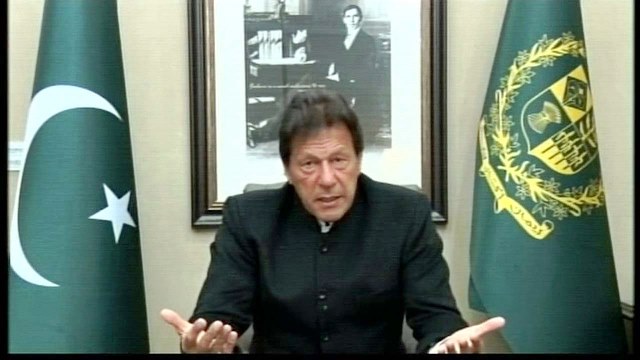
Pak Reopens Airspace For Civil Flights
“With immediate effect, Pakistan airspace is open for all type of civilian traffic on published ATS routes,” read a notice to airmen (NOTAM) issued by the authority.
The country had earlier claimed that it would not open its airspace for commercial flights until India removed its fighter jets from forward Indian airbases.
Pakistan had fully shut its airspace on the eastern border with India after the Indian Air Force carried out aerial airstrikes on a Jaish-e-Mohammed (JeM) terror camp in Balakot on February 26.
The strikes on the terror camp were in response to the JeM-perpetrated terror attack in Pulwama, Jammu and Kashmir, on February 14, in which 40 CRPF personnel lost their lives.
In mid-April, Pakistan opened one of its 11 air routes for west-bound flights from India — airlines like Air India and Turkish Airlines have started using it.
In March, the neighbouring country partially opened its airspace but did not allow Indian flight to fly over its airspace.
Since then, foreign carriers using Indian airspace have been forced to take costly detours because they cannot fly over Pakistan. The closure mainly affects flights from Europe to Southeast Asia.
Pakistan lies in the middle of a vital aviation corridor whereby the airspace restrictions, which have been continuing since a long time, impacts hundreds of commercial flights per day, extending flight timings for passengers, as well as fuel costs for airlines. (ANI)
]]>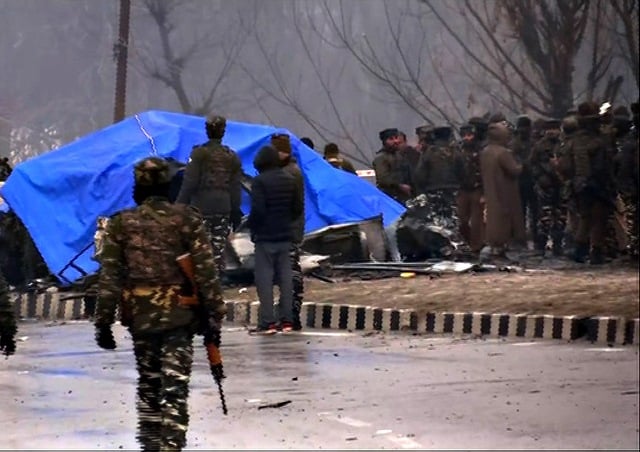
Lok Sabha Amends NIA Bill, Oppn Fumes
Intervening in the debate on the National Investigation Agency (Amendment) Bill, 2019, Shah said that BJP government was keen to eradicate terrorism and will not look at the religion of the accused while doing so.
He accused the UPA government of taking a U-turn in the Samjhauta Express probe case, saying that those who were caught initially were released and others were caught. He said innocents had been framed.
The bill which seeks to strengthen National Investigation Agency (NIA) by empowering it to probe offences committed outside India against Indian citizens or affecting the interests of India, was passed by 278-6 majority. Shah demanded a division to put on record “who were against terrorism.”
Answering queries from members, he said if Pakistan does not cooperate in terror-related probes by NIA, there were other ways including “surgical strikes” and “aerial strikes” to get the message across. He said international pressure will force Pakistan to sign a SAARC agreement concerning fighting terror.
Shah also firmly advised AIMIM MP Asaduddin Owaisi to listen to the speeches of other MPs after the member contested the remarks of BJP MP Sayapal Singh.
Taking digs at UPA, Shah said the repeal of POTA had led to rise in terrorism.
“It (POTA) was repealed to save the vote bank politics. It was helpful in protecting the borders of the country,” he said.
He said that the decision to repeal the POTA, taken by the first UPA government in its first Cabinet meeting, was a “political decision”.
Shah said the opposition members can do their politics but should not use the parliament for this. The minister, who faced some interruptions from opposition members, said the decision to repeal POTA was not correct and the view was also shared by security agencies.
“There was such rise in terrorism between 2004 and 2008 that the UPA had to bring the NIA Bill,” he said, adding that if there were POTA, Mumbai blasts and the terror attack could have been prevented.
He said government acts tough against any form of terrorism without looking at one’s religion and referred to the “tough action” in cases relating to the LTTE.
Shah urged members to speak with caution as their remarks can have implications in the long run. “If we are not united, it can boost the morale of terrorists,” he said.
Later, responding point-by-point to queries raised by members, Shah said terrorism is “neither right wing or left wing” but is terrorism.
Referring to concerns raised by National Conference member Hasnain Masoodi, he said there was one designated court in every state and said any misinformation spread on the issue will not work with the people of the state.
He said the BJP-led government was concerned about rights of those killed by terrorists.
“You are so concerned about personal liberty but those who are killed by terrorists, are you not concerned about their children their widows. We are concerned about them also,” he said.
Responding to a query about Pakistan, he said there was a SAARC agreement which Pakistan has not signed.
He said if Pakistan does not cooperate in NIA probe “there are other ways – surgical strike, air strike”. The surgical strike on terror launch pads and aerial strike on terror camp were carried out during rule of first term of Modi government.
Responding to a query from Congress member Manish Tewari about legality of CBI, he said the court had not given its final judgement.
Shah then took a dig at Congress. “If it was illegal, then Congress would have been the biggest sufferer because the kind of misuse Congress has made of CBI, probably no one else has done,” he said.
Shah said once a case is taken up by NIA, there is no interference by the state agencies. He said NIA had 90 percent success ratio in getting convictions.
Answering a query about witness protection programme, he said there were court rulings and the central agencies follow them.
On queries by Owaisi about CBI not filing appeals in some terror-related cases, he said the decision was not taken by the agencies themselves but is based on the opinion of law officer.
He said the BJP-led government works according to law with investigative agencies, prosecution wing and judiciary doing their respective work.
Citing Samjhauta Express case, he took a dig at UPA government and said some people were caught by the investigative agencies after the blasts.
He said UPA government released those who had been caught initially and others were caught others.
“Why were they released, for what reason,” he asked.
ANI
]]>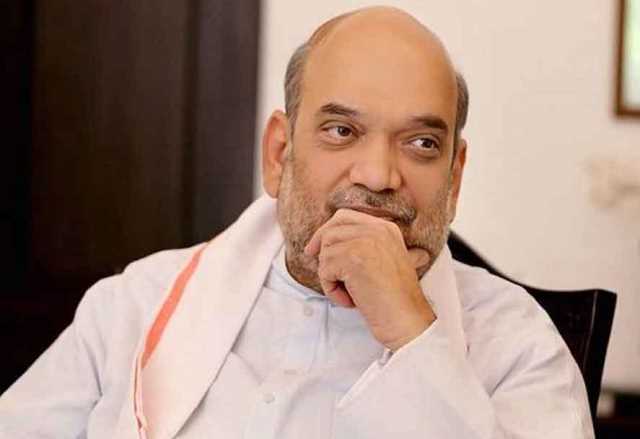
Shah Threatens Oppn, Says Owaisi
“Whoever doesn’t support their (BJP) decisions, they call them anti-nationals,” said Owaisi.
“Amit Shah threatens us by raising his finger but he is just a Home Minister, not God. He should read rules first,” he said.
The Lok Sabha on Monday witnessed some uproar during a discussion on the National Investigative Agency (Amendment) Bill, 2019 as Home advised AIMIM to listen to the speeches of other MPs after the member had contested the remarks of a BJP MP Satyapal Singh in the House.
“I would like to quote some of the cases and when we talk about Malegaon, we should talk about Hyderabad also. In Hyderabad, I know specific cases and not only one. I can quote many cases here when it was being made political just because it did not suit the political interests or a political party,” Singh, a former top police official, said.
“In Hyderabad, I remembered a very specific case when one of the police commissioners probing Mecca Masjid blast arrested some of the suspects from the minority community. The Chief Minister himself called the Police Commissioner and told him to not do this or else he would lose his job,” he added.
There was an uproar created by the Opposition with Owaisi demanding that the ruling party should place on the table of the House the conversation of the Hyderabad Police Commissioner.
Amid the uproar, Shah told Owaisi to make a habit of listening to the speeches made by members in the House.
“When A Raja sahab was speaking, why you did not stand up? He said so many things and it was as per the House rules. We heard it patiently. Make it a habit to listen to speeches, Owaisi sahab. This will not be accepted,” said Shah. (ANI)
]]>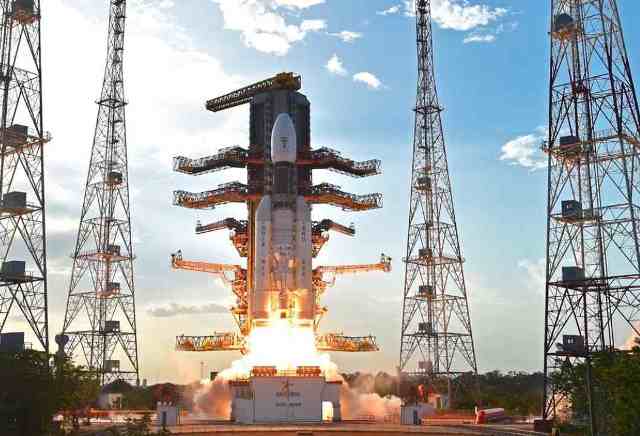
Tech Snag Delays Chandrayaan-2 Launch
ISRO’s public relations officer (PRO) Guruprasad said that the revised launch date will be announced later.
“A technical snag was observed in launch vehicle system at 1 hour before the launch. As a measure of abundant precaution, #Chandrayaan2 launch has been called off for today. Revised launch date will be announced later” ISRO tweeted minutes ahead of the scheduled launch on Monday.
The country’s second lunar spacecraft was to be launched onboard a Geosynchronous Satellite Launch Vehicle (GSLV) Mk-III from Satish Dhawan Space Centre at Sriharikota in Nellore district of Andhra Pradesh at 2:51 am.
Chandrayaan-2, which has home-grown technology, will explore a region of Moon where no mission has ever set foot. According to ISRO Chairman Kailasavadivoo Sivan, the landing site, at a latitude of about 70 degrees south, is the southernmost for any mission till date.
The spacecraft consists of an orbiter, a lander and a rover together referred to as “composite body”. The probe’s total mass is 3.8 ton and it is expected to land on Moon’s south polar region on September 6 or 7 this year.
It will be the first Indian expedition to attempt a soft landing on the lunar surface. This mission will make India the fourth country after the US, Russia and China to carry out a soft landing on Moon. (ANI)
]]>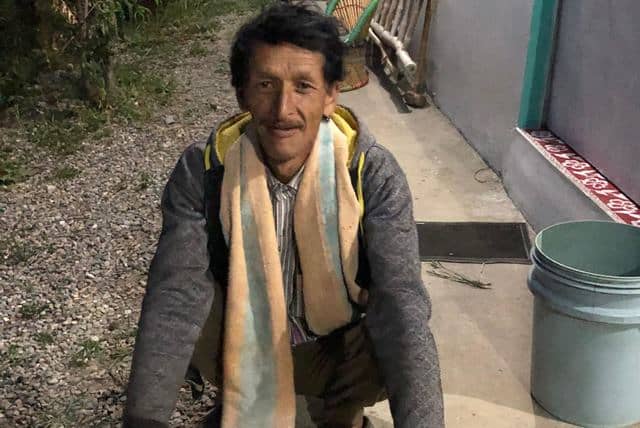
‘Nobody Has Heard About Skill India In My Village’
In the remote Satpuri village of Naintial district in Uttrakhand, Shobhan Singh Rawat, 50, an electrician and a farmer, says if job opportunities are not created in the hills, all literate youth will migrate to bigger cities eventually
I am an electrician. It is a vocation that my family is well equipped with. And that is why my sons also chose to be electricians. Both my sons are in Haldwani — one is pursuing an ITI course to become a technician/ electrician, and the other is running a shop of electrical goods. We have an ancestral orchard in our village, but the money from the yield is not enough for our family.
We could benefit from an initiative like Skill India, but we don’t know much about the scheme, nor do we have any idea about how to avail it. The nearest high school is nine kilometers from our village. Most villagers are forced to send away their kids for better education. So it is highly unlikely that a programme like Skill India can make its way to our village any time soon. I personally did not pursue any formal course to become an electrician. There were no institutes nearby for training. I just watched and learned.
Due to lack of higher education, job oriented courses and industries in the area, the village youth of the entire region are lagging behind. This region has been blessed with plenty of fruits and an enviable weather. But there’s not much to do here. Either we work relentlessly in the fruit orchards, which pays only in one season, or we earn money locally, working as electricians. Since the village has merely 300-350 people, there is not much scope left for our children here. My sons, like most other youngsters here are not interested in farming.
If sources of employment are not increased, then all the literate youth in the village will eventually migrate to bigger cities. I seriously doubt that my sons will ever come back to the village. Moreover, I fear that I might have to shift to Haldwani as I get older. I don’t want to leave my orchards, but do I have a choice?
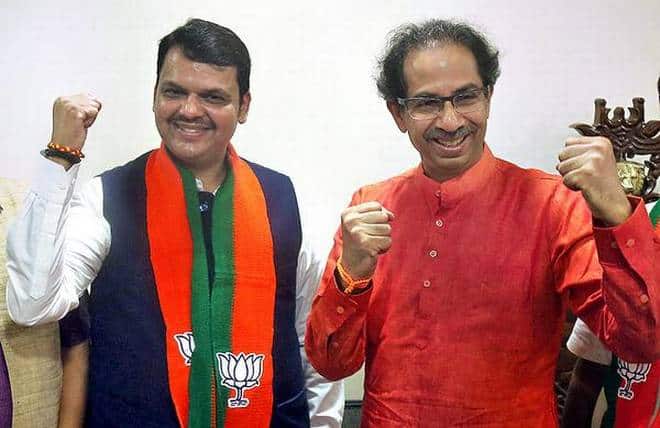
Maharashtra To Remain A Saffron Stronghold
As Congress members make a beeline for the ruling Bharatiya Janata Party in Karnataka to Goa, the election-bound state of Maharashtra is proving to be no exception. With less than three months to go for the assembly polls, cadres from both the Congress and the Sharad Pawar-led Nationalist Congress Party are scouting around for greener pastures and the BJP is proving to their preferred choice given that the saffron party is on the ascendant in this western state. The BJP-Shiv Sena alliance enjoys a massive majority in the assembly and, more recently, it swept the Lok Sabha polls.
What is particularly galling for the Congress-NCP alliance is the erosion in its support base as Dalits, backward classes, upper castes and, now even the dominant Maratha community, have shifted allegiance to the BJP.
The BJP’s success in winning over the Marathas follows the concerted efforts made by the saffron party over the last five years to reach out to them. The party’s focus on the Maratha community is understandable as it comprises nearly one-third of the population in the state and has always wielded strong political influence. Unlike Haryana where the BJP chose to ignore the dominant Jat community and consolidated the non-Jat vote, in Maharashtra the BJP strategized to win over the influential Marathas.
The BJP has been working on various fronts simultaneously to wean away the Marathas from the Congress-NCP alliance. The saffron camp worked hard to weaken the influence of the Marathas over the bank, sugar and milk cooperatives in the state. While draining them economically, the BJP made a special effort to touch base with the influential Maratha leaders in the Congress and the NCP, persuading many local leaders to switch sides. For instance, the Congress was dealt a severe blow on the eve of Lok Sabha elections when the leader of its legislative party Radhakrishna Vikhe-Patil and several others joined the BJP. The NCP also suffered a similar fate.
Then again, the saffron camp moved quickly on the demand for including the Marathas in backward class category to enable its members to avail quotas in government jobs and educational institutions. At the one stage, it appeared that the state-wide protests by the Marathas for reservations would spiral out of control and hurt the BJP’s electoral prospects. But Maharashtra chief minister Devender Fadnavis, under the guidance of BJP president Amit Shah, managed to snuff out the protests. They first identified the local leaders in districts who were spearheading this stir and then proceeded to give them tickets and positions to soften them. At the same time, it worked on meeting the Marathas demand for quotas.
The project, which began in 2014 when Fadnavis asked the State Backward Class Commission for a report detailing the extent of the social and economic backwardness of the Marathas, eventually culminated in the enactment of a law providing 16 percent quota for Marathas.
The BJP government got a shot in the arm when its move was endorsed by the Bombay High Court earlier this year though the quota was slashed down to 12 percent. The decision has since been challenged in the Supreme Court on the ground that this quota exceeds the 50 percent ceiling on reservations laid down by the apex court. The matter will come up for its next hearing later this month. The BJP is encouraged by the fact that the Supreme Court has not stayed the High Court order though it has ruled against its retrospective implementation. In fact, the saffron party is not worried about its decision being struck down as it believes it has succeeded in sending out the message that the Fadnavis government is indeed serious about providing quotas to Marathas and has been working in that direction for the last five years.
This effort is held out in sharp contrast to the previous Congress-NCP government’s decision on quotas which was struck down by the courts. The BJP also tom-toms the fact that a Brahmin chief minister has swung this deal while earlier Maratha leaders had failed to deliver on the long-pending demand. In fact, when the BJP appointed a Brahmin as chief minister, it was believed that he would fail as Maharashtra has traditionally always had a Maratha chief minister, But Fadnavis has proved his critics wrong and like his Haryana counterpart, has managed to hold his own and got widespread acceptance.
Having already won over the other castes, the BJP’s success in winning over the Marathas has underlined its dominant position in Maharashtra. Together with its partner, the Shiv Sena, this alliance looks set to continue its winning streak in the coming assembly elections. Coming a few months after its massive victory in the Lok Sabha polls, the momentum remains in favour of the BJP-Shiv Sena alliance. Besides getting its caste arithmetic right, the saffron camp also has the advantage of the strong religious polarization witnessed in the general election. The same sentiment will prevail in the October state polls.
“We are comfortably placed in Maharashtra. We have a strong party organization, our alliance with the Shiv Sena is on track and, more importantly, there is no anti-incumbency against our governmen,” a senior BJP leader told Lokmarg.
On the other hand, a demoralized Congress and NCP is in disarray. Not only has it lost its support base, but the Congress organization is also weak and faction-ridden. The leadership vacuum at the center, following Rahul Gandhi’s decision to step down as Congress president, has added to the party’s woes. The grand old party has a serious problem at hand as there is no visible or immediate let-up in the overriding anti-Congress mood. “Anti-Congressism has now become an ideology,” bemoaned a party leader.
]]>
England On Moon Before Chandrayaan
The winner could not be decided as both the normal 50 overs and super-over action ended up in a tie.
In the super over, England scored 15 runs and they were able to restrict New Zealand to 15 runs, and they won the match as they had scored more boundaries in the match.
In the 50-over spell, both England and New Zealand registered scores of 241.
Chasing a below-par target of 242, opener Jason Roy and Jonny Bairstow started scoring for England.
Roy (17) built a 28-run brief stand with Bairstow before he was caught behind the stump by Tom Latham in the sixth over. Matt Henry struck early for New Zealand.
Joe Root came to bat at number three and he along with Bairstow, stitched a 31-run partnership. Root (7) searched for the release shot and instead edged de Grandhomme behind in the 17th over. Tom Latham ended up taking a simple catch.
Bairstow, too, failed to leave a mark and departed in the 20th over to Ferguson. He played a knock of 36 runs.
English skipper Eoin Morgan joined Ben Stokes in the middle. In the 24th over, Morgan (9) was sent back to the pavilion by Jimmy Neesham, thanks to a brilliant catch by Ferguson at point boundary.
England were at 86 for four in 23.1 overs and still required 156 runs to lift their maiden World Cup title.
Jos Buttler and Ben Stokes retrieved the innings and the duo cautiously put England as the firm favourite. They built a 110-run partnership before Butler was dismissed by Ferguson in the 45th over.
England needed 24 runs from the last 12 balls. Stokes kept playing aggressively, but nobody was able to support at the other end. With 15 runs required off the last over, England had the rub of the green going their way as Martin Guptill’s throw went to the boundary, giving England four runs due to an over-throw. But New Zealand managed to keep their nerve to take the match into the super over.
Earlier, New Zealand skipper Kane Williamson won the toss and choose to face the aggressive English bowling line-up first.
Kiwis could not get the desired start as they lost Guptill early in the seventh over of the innings. Chris Woakes caught Guptill in front of the wickets and sent him back to the pavilion. Although Guptill (19) took a DRS as he was not convinced with the on-field umpire’s decision, the third umpire stayed with the ground umpire’s decision.
Henry Nicholls with Kane Williamson tried to build the innings and kept the scoreboard moving. By the end of 10 overs, New Zealand were at 33 runs for the loss of one wicket.
Williamson and Nicholls stitched a 74-run stand before the latter was caught behind the stumps by Jos Buttler in the 23rd over. Liam Plunkett got rid of Kiwi skipper Williamson (30) as the scoreboard showed 103.
Ross Taylor joined Nicholls in the middle and helped him to get a half-century off 71 balls in the 25th over. Shortly after, Plunkett bowled Nicholls (55) on the back of a length ball in the 27th over.
England bowlers send the Kiwis top-order back to pavilion without scoring many runs. Taylor and Tom Latham stitched a brief stand of 23 runs before the former was dismissed by Mark Wood in the 34th over. Taylor added 15 runs to the team’s total.
Neesham came in to bat at number six and built a partnership of 32 runs with Latham. Neesham was caught by Joe Root on mid-on in the 39th over, giving Plunkett his third wicket of the match.
Latham and Colin de Grandhomme guided the team past 200 runs. The duo built a partnership of 46 runs before Grandhomme was caught on mid-off by substitute James Vince.
Later, Latham departed in the 49th over at 47. However, New Zealand’s tailenders added some more runs and the innings ended with a score of 241 runs in 50 overs.
For England, Woakes and Plunkett took three wickets each.
Brief scores: England 241/10 (Ben Stokes 84*, Jos Buttler 59, Lockie Ferguson 3-50) and New Zealand 241/8 ( Henry Nicholls 55, Tom Latham 74, Chris Woakes 3-37)
Super Over score: England 15/0 and New Zealand 15/1.
(ANI)
]]>